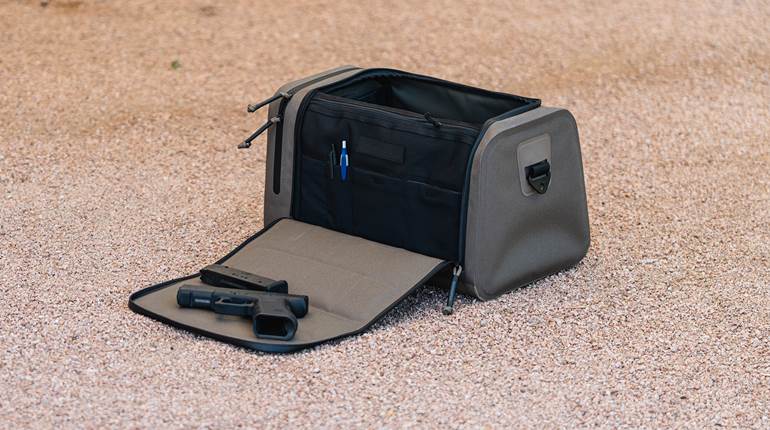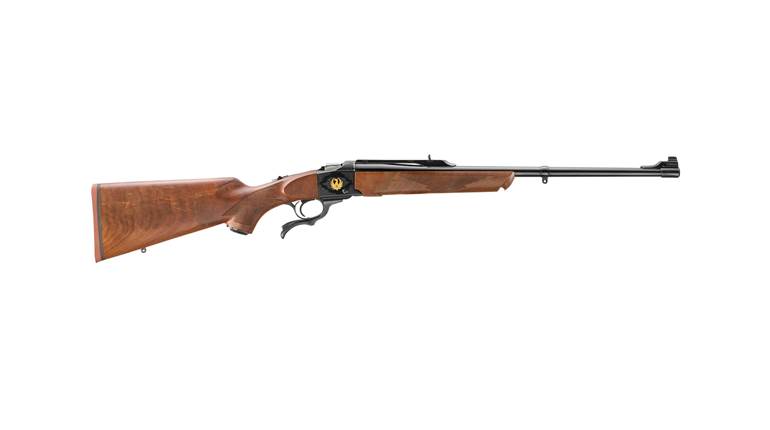
You arrive at the range, ready for some relaxation with a favorite shootin’ iron, and as you start to set up you realize that you have forgotten a critical accessory. Or, perhaps, you get settled into a shooting session and suddenly something comes loose on your gun, and you find yourself without the simple tools needed to get you back into action. Sound familiar? If you are also one of the many shooters who must travel an hour or more to your range, events like these can ruin an entire day.
On the other hand, we gunnies can drown in our toys. Some of us have a gadget for every contingency, and we never leave home for the range without enough stuff to nearly break the axles on our truck. These guys often minimize their range trips simply because it takes so much time and effort to load and unload their shooting plunder.
Fortunately there is a happy medium that balances the need to deal with minor issues at the range and looking like Theodore Roosevelt’s expedition to the Amazon. Modern guns have gone modular, meaning that one can remove and replace modules within the gun to address a particular shooting need. The concept isn’t all that new, but implementing it in our shooting activities hasn’t caught on as quickly as it might.
Range Bags
Most folks buy one range bag and load it up for whatever shooting they plan to do on a particular day. That’s fine if you shoot just a handful of firearms—say three or four—and your range sessions are pretty much the same each time. I shoot a lot of guns—rimfires, pistols, rifles, black powder cartridge and more—so loading one bag with the stuff I need, then removing it and putting it all away for the next time wastes a lot of time and is generally a pain. Too, the one-bag method puts me in great jeopardy of forgetting some small but critical accessory—I forget a lot. My answer is to have three separate range bags—rifle, pistol and rimfire.
The rifle range bag has a stapler and a box of staples, my spotting scope, electronic hearing protection, a lens pen for cleaning optics, a couple of wide Magic Markers for enhancing long-range targets, a PAST shoulder pad for the hard kickers and a notebook with Sharpie pens in it at all times. To this I’ll add ammo for the rifle (or rifles) I am shooting on a particular day. I try to keep my range bags relatively small. Ammo and accessories can weigh a lot, and I see no joy or graceful  purpose in risking a hernia traveling from truck to shooting bench. My Sinclair International Heavy Varmint Benchrest and bags reside in a separate heavy-duty plastic tote. If I’ll be chronographing ammo, my Oheler 35P has its own case made from a plastic rifle case.
purpose in risking a hernia traveling from truck to shooting bench. My Sinclair International Heavy Varmint Benchrest and bags reside in a separate heavy-duty plastic tote. If I’ll be chronographing ammo, my Oheler 35P has its own case made from a plastic rifle case.
My pistol range bag contains its own stapler and staples—get a stapler for each bag—a magazine loading tool, wide Magic Markers (red and black), shooting gloves, electronic hearing protection, a shot timer and a notebook with pens. There’s also a small pill bottle with disposable foam plugs for those times someone shows up without ear protection. I keep target-pasting tape in each bag, and if I am teaching my senior shooters, I have some pre-cut cardboard center zones for when the targets get too shot up. I made a bunch of these to save the costs on targets.
The rimfire bag is mostly just for ammo, but my rimfire bag also has two shearling-lined side pouches where my S&W K-22 and K-22 Mag have a more or less permanent home. Even when I shoot other rimfires, I’ll often drag one of the Smiths out just because I enjoy shooting them so much. It, too, has its own stapler and staples, as well as target pasting tape.
Tool Kits
Here is where you can easily go bananas with gadgets and gizmos. My shooting tool box is probably more extensive than most simply because I am shooting such a variety of guns. It’s not much to look at; the box is an old plastic toolbox that was a promotional gift from years ago. I keep thinking I’ll either get a Gerstner or build a nice toolbox out of oak someday, but, alas, I never can seem to get around to it. 
Your tool kit will be specialized to meet your specific needs, but here are a few universal must haves: A screwdriver kit—Brownells standard Magna-Tip set has the basic drivers that most guns use. If you have a lot of Torx-head screws—like scope rings and bases—you might want to include them instead of the cheap ones included with many scopes. They beg to  slip out of the socket and gouge the gun. Punches for drift pins are another universal tool; Brownells has a three-piece set for 9 bucks that should cover you. Include a small hammer—preferably brass or brass tipped to prevent marring—to take care of beating chores. Pistol shooters should have a basic, one-piece cleaning rod. You may not always clean your handgun at the range, but you might find yourself needing to knock out a stuck case or a bullet out of the barrel because of a squib load. A couple of toothbrushes and/or the ubiquitous
slip out of the socket and gouge the gun. Punches for drift pins are another universal tool; Brownells has a three-piece set for 9 bucks that should cover you. Include a small hammer—preferably brass or brass tipped to prevent marring—to take care of beating chores. Pistol shooters should have a basic, one-piece cleaning rod. You may not always clean your handgun at the range, but you might find yourself needing to knock out a stuck case or a bullet out of the barrel because of a squib load. A couple of toothbrushes and/or the ubiquitous  M16 brush will help de-gunk a gun and keep it running. Beyond that and perhaps some cleaning patches, the rest of your tool box will largely depend on you, your skills and the guns you shoot.
M16 brush will help de-gunk a gun and keep it running. Beyond that and perhaps some cleaning patches, the rest of your tool box will largely depend on you, your skills and the guns you shoot.
Sadly, like so many of my life lessons, I learned the hard way to not keep bore solvents, cleaners and lubricants in my toolbox. Unless you are supremely disciplined about capping them firmly, they will eventually leak and create a mess. That mess can not only be an irritation, it can be costly if one of those solutions ruins a tool. I am still looking for a suitable tote with a lid to hold cleaners and lubricants for the range. The perfect one has yet to surface, so now I use a small, cheap plastic one and take up the extra space with a few sacrificial cleaning rags.
When I am doing rifle work, a sturdy cleaning rod is a Godsend. I made a rifle cleaning rod holder from a 4-foot length of PVC pipe, gluing a cap on one end and a glue-threaded bushing on the other. A threaded plug keeps the rod safe and secure. I can get two rods into this tube if needed.
If you put together some modules containing those things that you regularly use at the range, you’ll find yourself not tearing your hair out so much. What I have detailed here isn’t meant to be exhaustive or the last word. Rather, it should help stimulate your mind to come up with the kits you’ll need to keep on shooting. Going modular allows you to simply grab a few pre-packed things and head to the range, knowing that in all likelihood you’ll have everything you need.
Hints
—Buy a stapler and a box of staples for each range bag, rather than transferring one to another. It also helps to have all the staplers the same, in case you need to pirate staples from another bag in an emergency.
 —If you have battery-operated accessories, keep a spare battery or set of batteries in that bag.
—If you have battery-operated accessories, keep a spare battery or set of batteries in that bag.
—A small Vise-Grip plier and a pair of Vise-Grip welding clamps (sometimes called a “cowboy clamp”) will find innumerable uses.





































